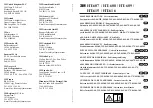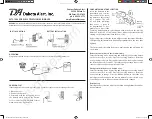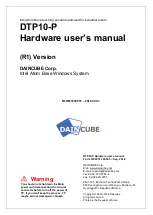
Section C: Principle of Operation
6
Figure 2: Heat Exchanger, Impinger and Heat Sink Assembly
When a positive DC voltage is applied to the n-type thermo-electric element,
electrons pass from the p- to the n-type thermo-electric element and the cold side
temperature will decrease as heat is absorbed. The heat absorption (cooling) is
proportional to the current and the number of thermo-electric couples. This heat is
transferred to the hot side of the Peltier element where it is dissipated into the heat
sink and surrounding environment.
Baldwin Thermo-Electric Coolers remove the moisture from the sample gas by
cooling the gas as it passes through a laminar impinger (heat exchanger). A
diagram showing the gas flow path through an impinger is shown in the Appendix.
The heat exchanger, made of 316L stainless steel, Durinert
®
(a corrosion-resistant
inert coating over 316L stainless steel), PVDF (Kynar), or glass, is mounted within a
thermally insulated heat transfer block bored to receive the heat exchanger without a
mechanical lock. This assembly allows the easy removal of any heat exchanger
simply by slipping it out of the cooling block by hand. The heat transfer block cools
the heat exchanger through the heat pumping action of the peltier element. The
heat transfer block is on the cold side of the thermo-electric element and the heat
sink is on the hot side of the thermo-electric element. The heat from the heat
transfer block is pumped to the heat sink where it is then dissipated into the air by
the heat sink fan. See Figure 2. The desired temperature is maintained by a closed
loop control system, which is implemented through an analog proportional controller.
The controller uses a type K thermocouple in the heat transfer block located very
close to the cold side of the peltier element as the input sensor.
Summary of Contents for BALDWIN 225CE
Page 19: ...19 APPENDIX A MODEL 225...
Page 20: ......
Page 21: ......
Page 22: ...BALDWIN ENVIRONMENTAL INC...
Page 23: ...BALDWIN ENVIRONMENTAL INC...
Page 24: ......
Page 27: ...20 APPENDIX B SAMPLE CONDITIONING SYSTEM...
Page 28: ......
Page 29: ......
Page 30: ......
Page 31: ......
Page 32: ......
Page 33: ......
Page 34: ......
Page 38: ......
Page 39: ......







































